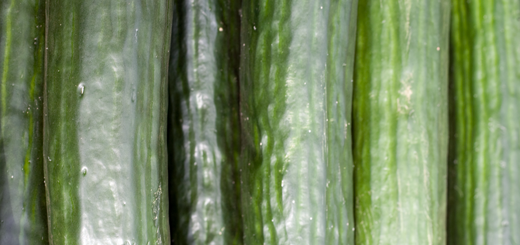Tips for Healthy Living: Pomegranate Power

Geri Wohl, Certified Nutrition Consultant Better Eating Coach
Pomegranate Power
By Geri Wohl, CNC
The seasons have changed, the days are shorter, the leaves have turned and the temperatures have dropped. Fortunately, nature provides us with a “super-food” that is packed with nutrients to weather the approach of winter. Pomegranates are one of the oldest known fruits, originating in Persia. The name pomegranate means “apple with many seeds”. An average pomegranate contains about 600 seeds. As such, pomegranates have been known as a symbol of health, fertility and eternal life.
The fruit is round with a hard outer shell. Inside the pomegranate is filled with juice-filled seed sacs called arils. The arils are the seeds that are consumed. A white, bitter membrane that is inedible separates the sacs. Both the arils and the juice are full of health benefits. The arils are very low in calories and rich in fiber, providing 83 calories in 100 grams (or ¾ cup) and 4 grams of dietary fiber. The high fiber content helps in supporting better digestion and regulates our blood sugar levels. For more about the benefits of dietary fiber, see my article “Artichokes–From Leaf to Heart”.
In addition to the dietary fiber, these powerhouses of nutrition get the “super-food” designation due to the health promoting antioxidants that have been associated with boosting immunity, being heart protective and slowing new blood vessel formation in certain cancers. Pomegranates are rich in flavonoids and polyphenols, two types of antioxidants that may help protect against heart disease and cancer. One antioxidant found in pomegranates is called punicalagin has been shown to support the heart and blood vessels. In studies, punicalagin helps to lower cholesterol and blood pressure while also reducing the size of atherosclerotic plaques. Punicalagin, in fact, makes up about half of the antioxidant activity in pomegranates.
Pomegranates are also a good source of vitamins C and K, providing 17% and 20% respectively of the daily value. Vitamin C is important at this time of year for its immune support. In addition, vitamin C helps in wound healing, healthy gums and the building of collagen. Vitamin C also acts as an antioxidant. For more about the benefits of vitamin C, see my article “Nectarine Nutrition.” Vitamin K’s primary role is the maintenance of strong, healthy bones and proper blood clotting. Other nutrients found in pomegranates are vitamins B5, B6 and folate and the minerals calcium, copper, potassium and manganese. Pomegranates are also a vegan source of iron.
Here is a list of the benefits that pomegranates provide:
- Boost the immune system
- Provide anti-cancer properties such as anti-angiogenesis specifically in breast, prostate, colon and leukemia
- Act as a powerful antioxidant by neutralizing free radicals
- Inhibit platelet aggregation
- Lower cholesterol and other cardiac risk factors such as systolic blood pressure
- Reduce atherosclerotic plaques while keeping arteries more malleable
- May help lower joint pain and decrease inflammation
- Enhance digestion due to the increased dietary fiber
- Improve blood sugar regulation
- Offer protection against viruses and other microbes
- May improve depression by stimulating the serotonin receptors
- Protect bone due to high vitamin K levels
Pomegranates can be extremely messy as you try to release the precious arils inside. Once you cut open the fruit, the red juice can stain fingers, clothes and cutting boards. The best way to obtain the arils without the mess is to cut off the crown and then score the skin in quarters from the stem to the crown. In a bowl filled with water, break open the scored quarters apart with your fingers under the water. This will allow the arils to be separated from the white, inedible membrane. The seeds should sink to the bottom of the bowl. The skin and membranes can be thrown out leaving the crunchy, nutritious arils to enjoy.
The seeds can be eaten raw, in salads, or even with your morning yogurt and nuts. See my “Mizuna, Pomegranate and Walnut Salad,” for a delicious fall recipe. What a nutritious way to add to your day!
© Geri Wohl, CNC










